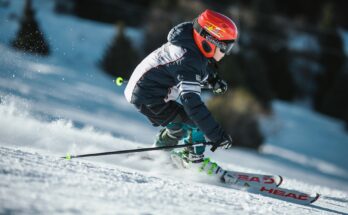Rotator cuff injuries are far too common in sports. Often, people might go long periods of time with a rotator cuff injury or shoulder joint injury such as a labral tear without consulting a medical professional for help. Sometimes the pain of a rotator cuff injury isn’t sufficient enough to motivate an individual to seek assistance, other times a rotator cuff injury can be managed with proper resistance training and symptoms greatly diminished or resolved. What is the rotator cuff, what does it do and how can we strengthen it and make sure it’s functioning properly?
What is it?
The rotator cuff is actually a group of muscles surrounding your shoulder blade and shoulder joint. These muscles help elevate and rotate your arm as they keep your glenohumeral joint (shoulder socket) in place. There are four main muscles that comprise the rotator cuff. Let’s take a look at these muscles and briefly discuss their function:
Supraspinatus:
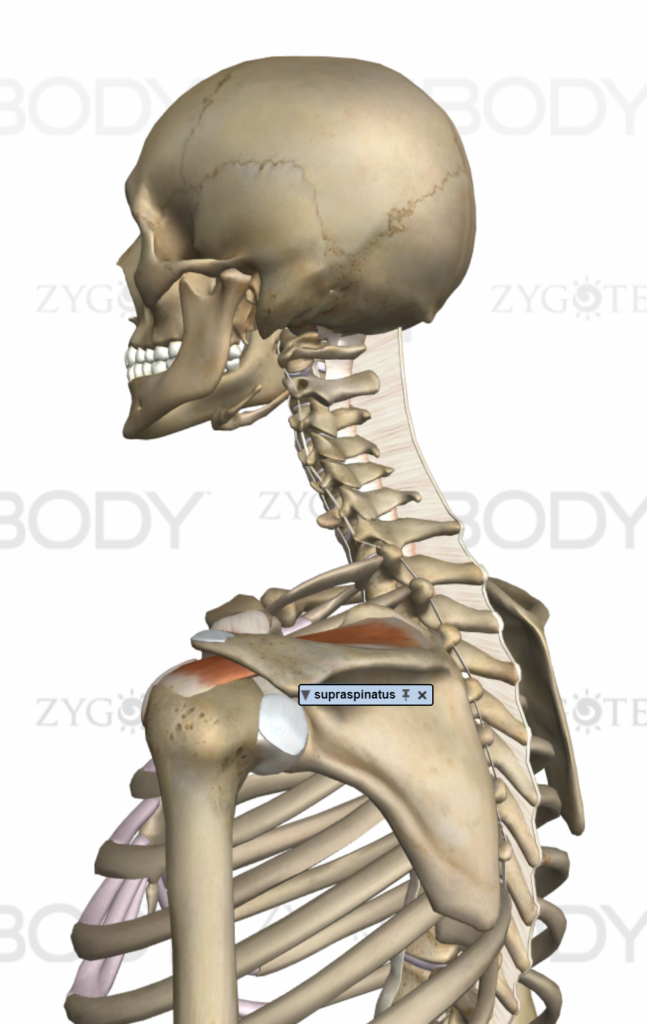
This small muscle is located at the top of our shoulder blades. It helps raise our arm out the side and keep our shoulder socket in place. This muscle is prone to injury and often frays and tears as it rubs up against bone features of the scapula. Strengthening this muscle is key to avoiding problems. Baseball and other throwing based sports take a toll on this muscle and it is often a culprit in athletic shoulder injuries.
Infraspinatus:
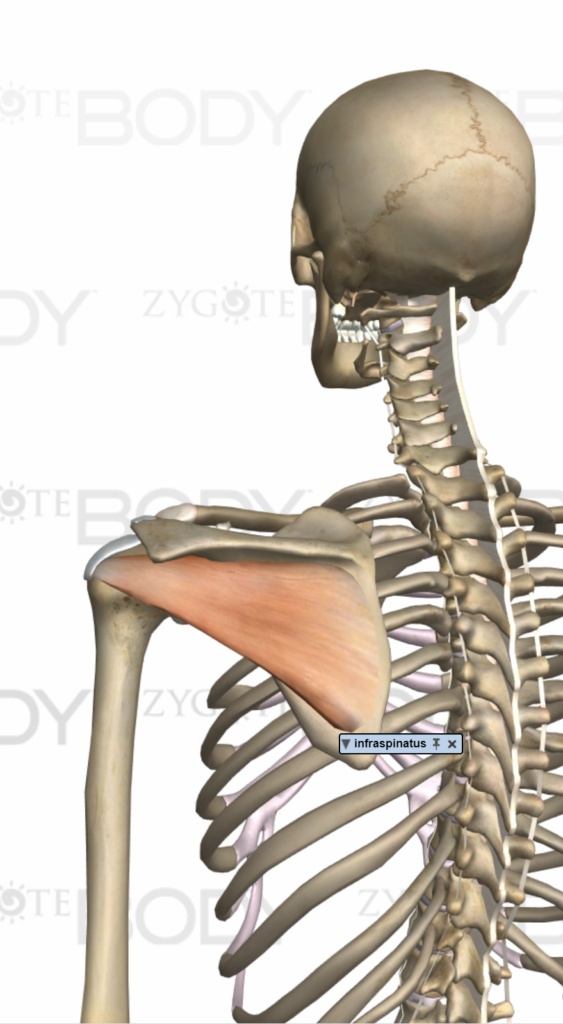
This is a pretty large muscle that comprises much of the posterior surface of the shoulder blade. This muscle externally rotates your arm and also keeps your shoulder in place. Often if a person lacks external rotation in their arm, we need to address and strengthen this muscle properly. Ensuring proper synergy with the read delt is important for proper shoulder mobility.
Subscapularis:
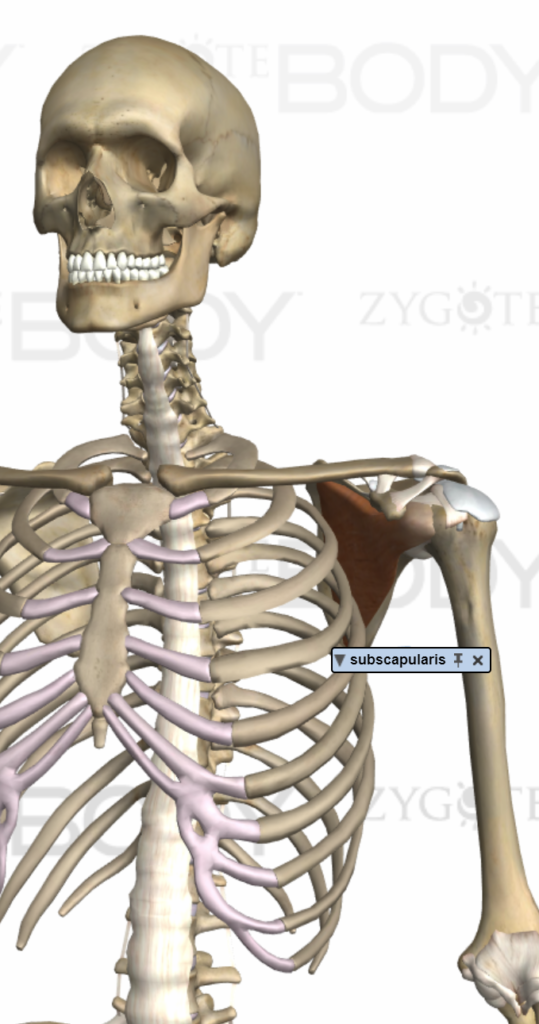
This is a huge muscle that’s on the anterior surface of the scapula, between the rib cage and shoulder blade. This muscle is prone to trigger points but is notoriously difficult to reach for release. Its job is to internally rotate our arm and pull it back down towards the body. In common upper body dysfunctions, this muscle becomes overactive with the lats and chest.
Teres minor:
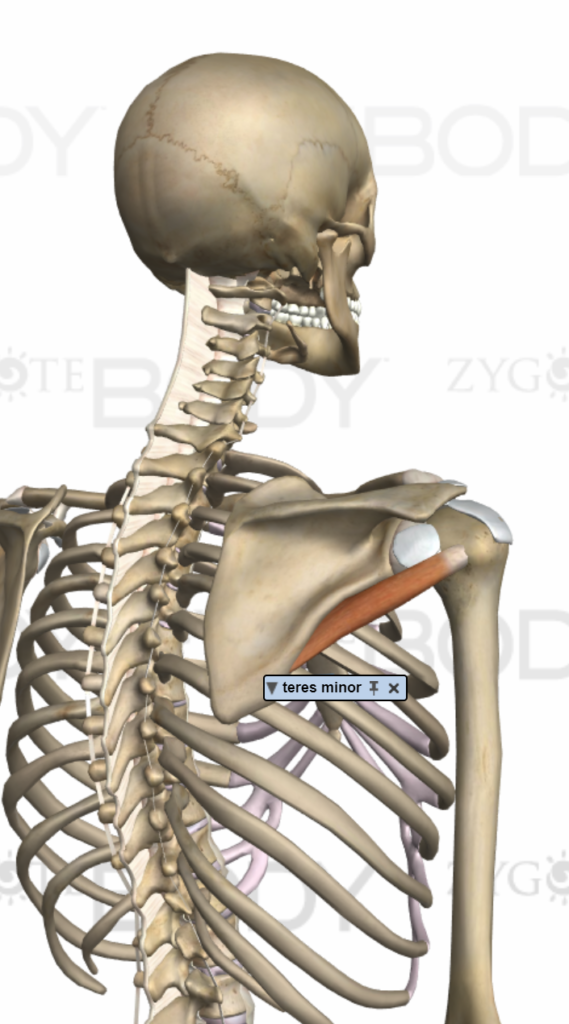
This is a small muscle located below the shoulder blade. Its main function is to stabilize the shoulder socket when raising our arms. This muscle works with the rear delt and infraspinatus to externally rotate our arm, but also this muscle pulls our arm back down towards our body.
This is a small muscle located below the shoulder blade. Its main function is to stabilize the shoulder socket when raising our arms. This muscle works with the rear delt and infraspinatus to externally rotate our arm, but also this muscle pulls our arm back down towards our body.
Common Rotator cuff injuries
The rotator cuff muscles are stabilizer muscles, their job is to work in conjunction with larger muscles of your trunk and arms to help us move our arms around safely. What tends to happen is people develop and compensate with large prime movers like chest, lats, deltoids, traps and our rotator cuff muscles don’t strengthen or engage properly. A compromised shoulder joint might not rotate and function properly, and over time we degrade the integrity of our shoulder joint from poor movement patterns. Frozen shoulder, bursitis, labral tears are all common shoulder issues that tend to develop over time when our shoulder movement is compromised.
Strengthening the rotator cuff
Properly strengthening the rotator cuff is difficult but necessary to do. Many prime moves such as the delt, pec, and lats tend to take over functions of our rotator cuff and compensate for us, making it difficult to engage the proper muscles. Focusing on isolating the rotator cuff muscles is key. If we look at the basic function of the muscles of the rotator cuff, we can reverse engineer resistance exercises for them.
The main function of the rotator cuff is internal and external rotation of are arm, so these kind of movements are what we will look at. As stabilizer muscles, the rotator cuff responds best to high volume, high repetitions, and time under tension. Repetitions in the 15+ range are preferable with shorter rest periods.
Performing low volume several times a week is a good idea when rehabilitating a shoulder injury. 2 sets of 15-20 with light weight at an even tempo is a good place to start as a warm up as well as for rehabilitation. Once adequate strength is developed, you can back down to maintenance and include rotator cuff exercises on your shoulder day.
Performing rotator cuff exercises properly is very important. Maintaining a braced core without swinging or using momentum will ensure you arent compensating with larger prime movers. Slow to moderate tempo ensuring a contraction of the proper muscles should yield a nice burn.
Let’s take a look at exercises to strengthen the rotator cuff:
External rotation:
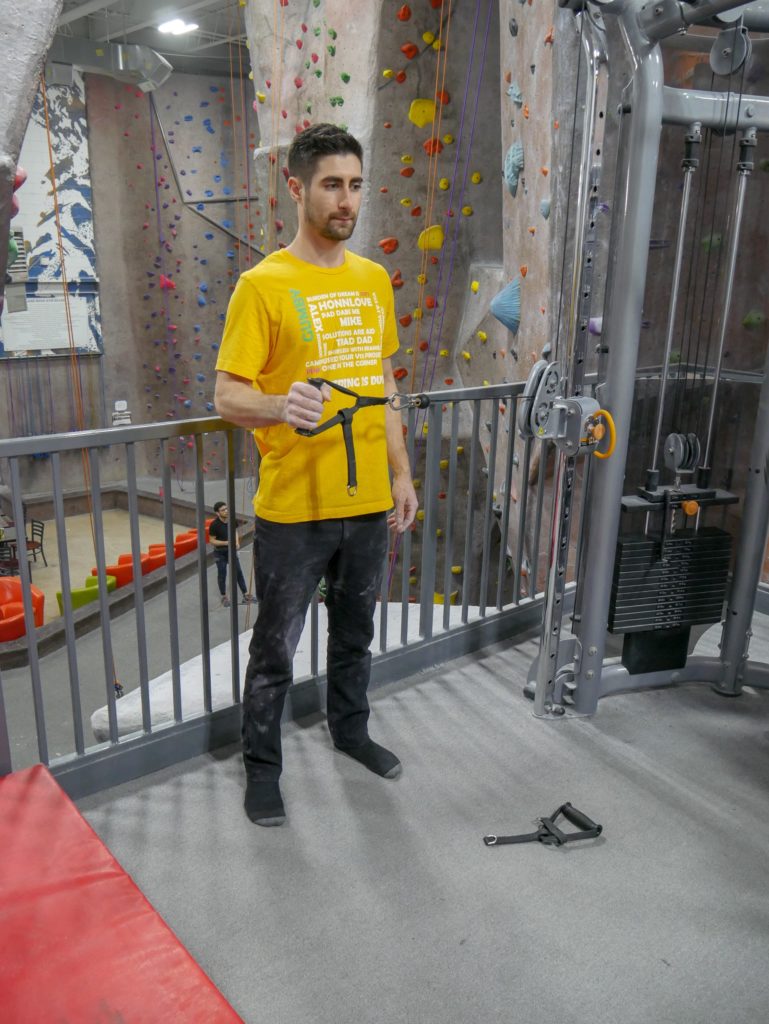
Start 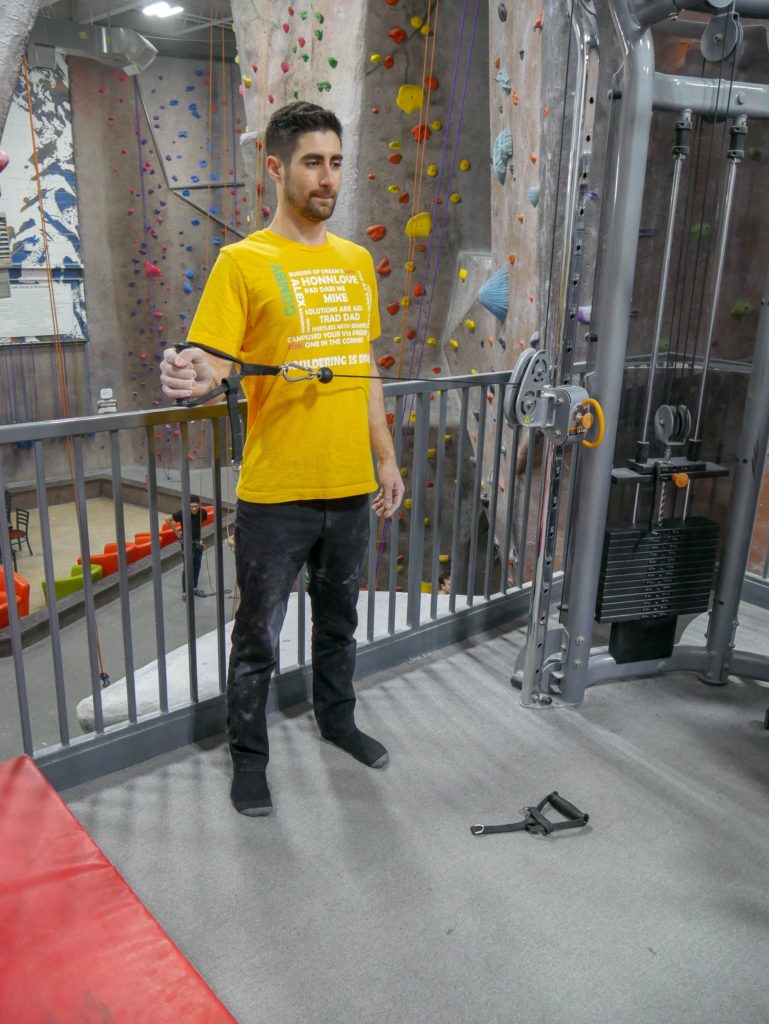
Finish
Internal rotation:
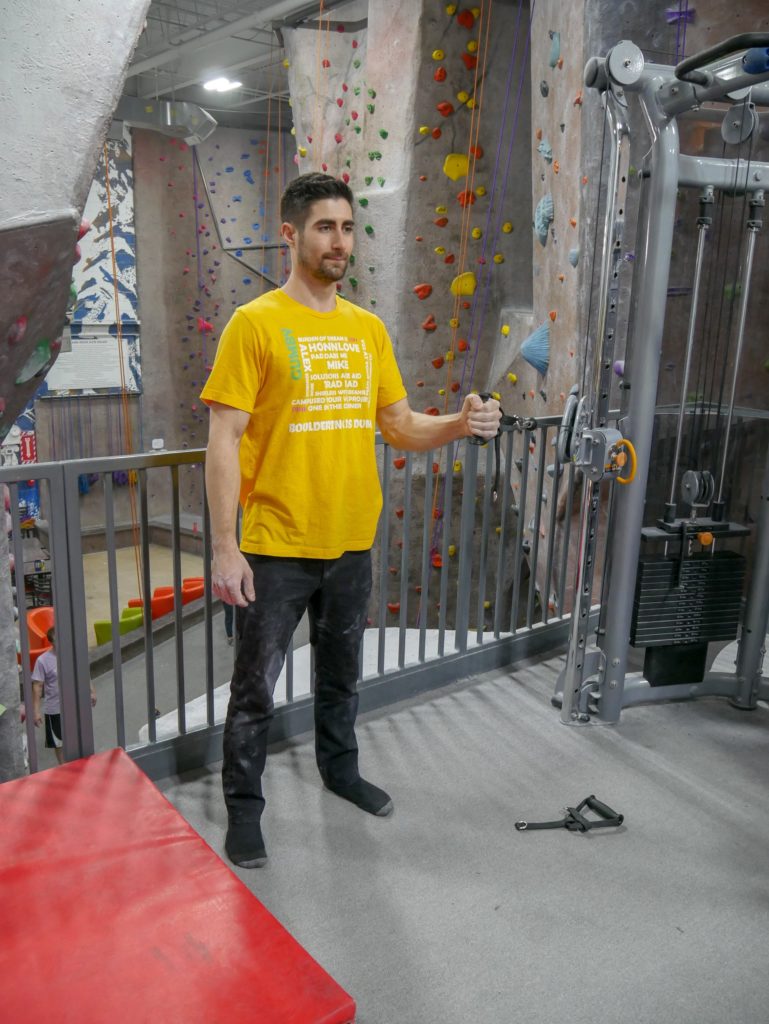
Start 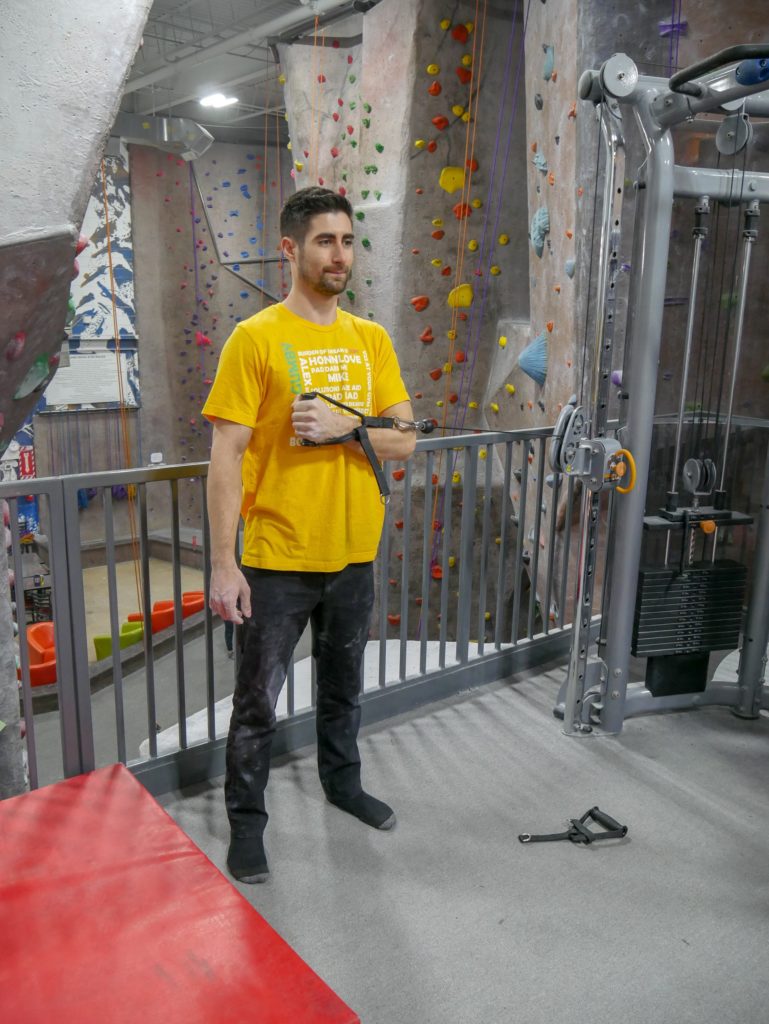
Finish
External rotation with abduction:
Internal rotation with abduction:

